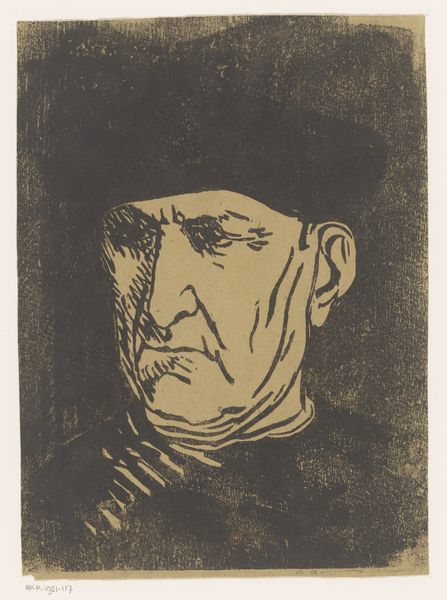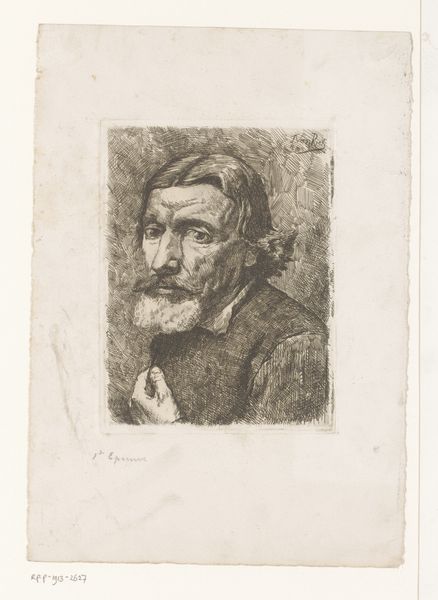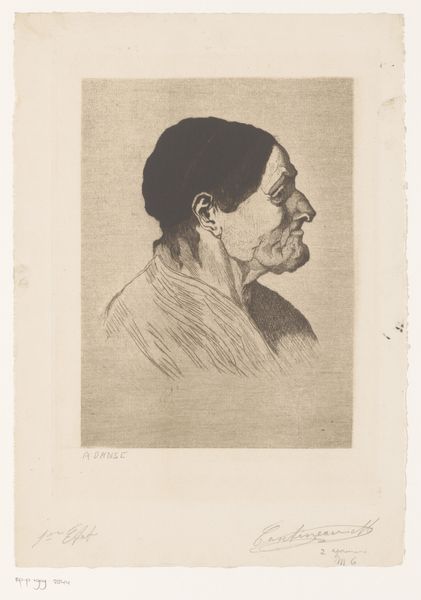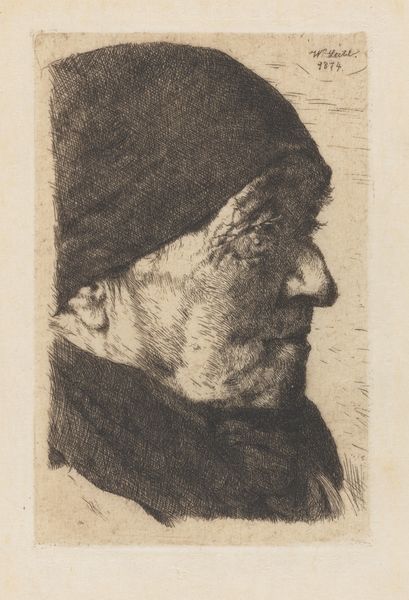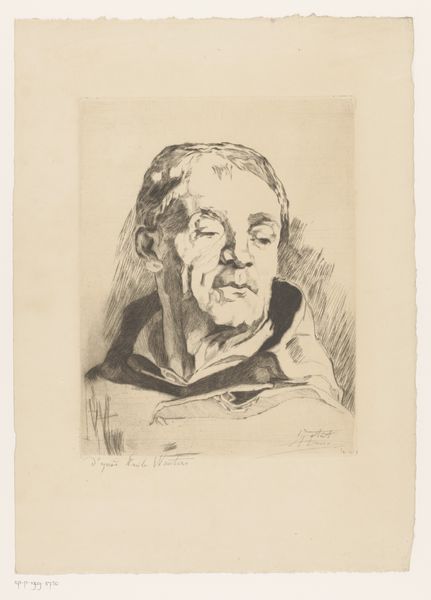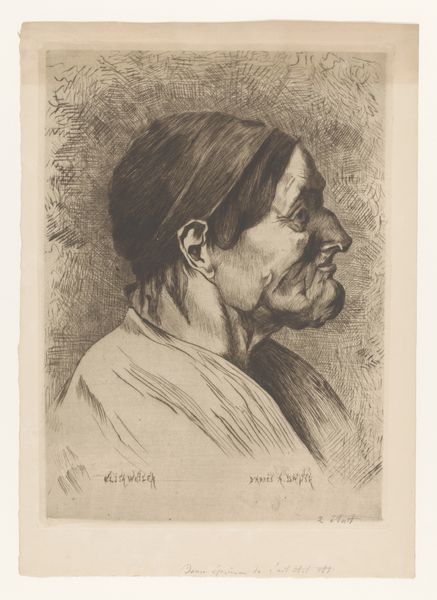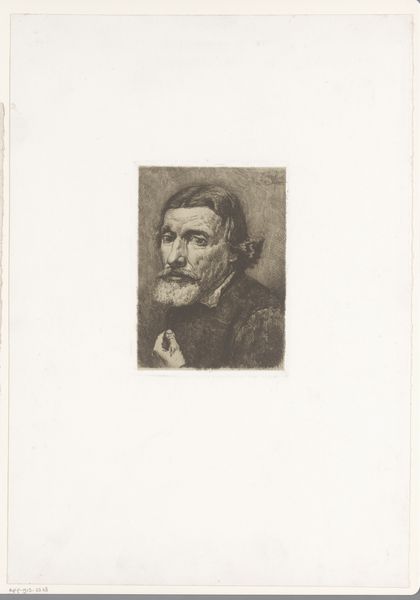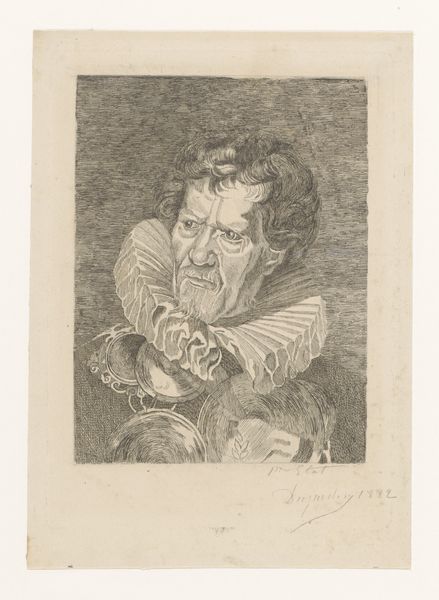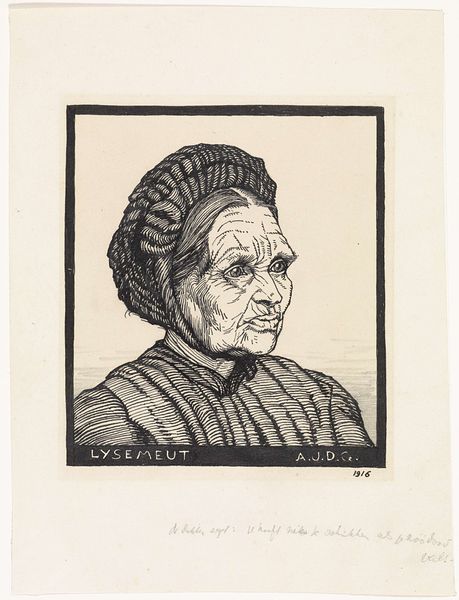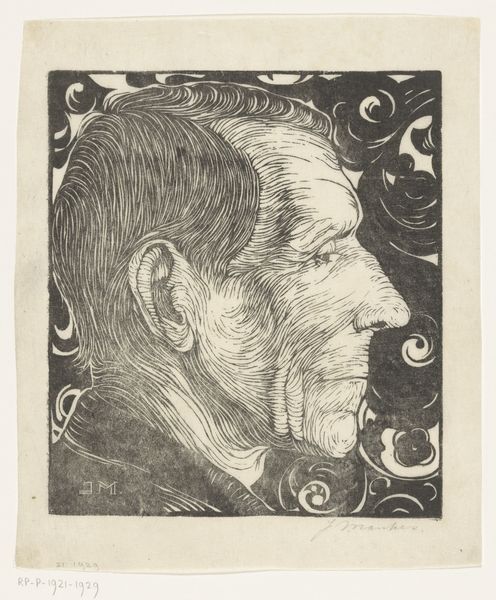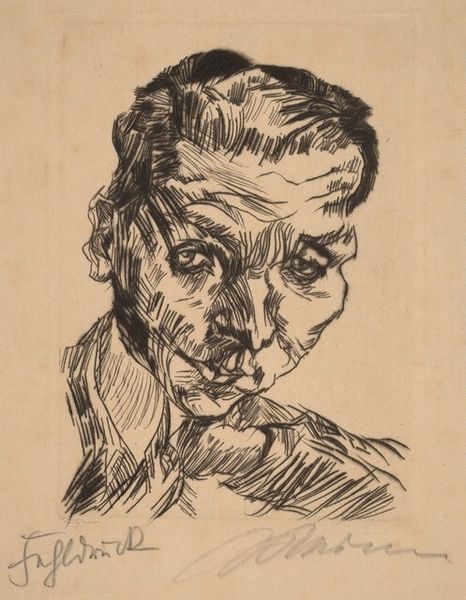
drawing, print, ink, woodcut
#
portrait
#
drawing
# print
#
pen illustration
#
caricature
#
ink
#
pen-ink sketch
#
expressionism
#
woodcut
#
modernism
Dimensions: height 298 mm, width 228 mm
Copyright: Rijks Museum: Open Domain
Julie de Graag made this portrait of Lijs Bus in 1916 using woodcut. The striking thing here is how De Graag reduces her palette to bare essentials: black and white. She uses the woodcut knife to carve a series of bold parallel lines, following the contours of Lijs Bus’ face and clothing. This creates a kind of rhythmic pulse, like a visual heartbeat. Look at how the lines bunch together to create shadows around the eyes and mouth, giving the face a sense of depth and character. The surface is so tactile, you can almost feel the grain of the wood and the pressure of the artist's hand. It's a reminder that art is not just about representation, it's about the physical act of making. In a way, this piece feels very close to the German Expressionist woodcuts of that period, such as those of Käthe Kollwitz. I think it’s a great example of how artists across different cultures were grappling with similar ideas, like simplifying form and emphasizing emotion.
Comments
No comments
Be the first to comment and join the conversation on the ultimate creative platform.

